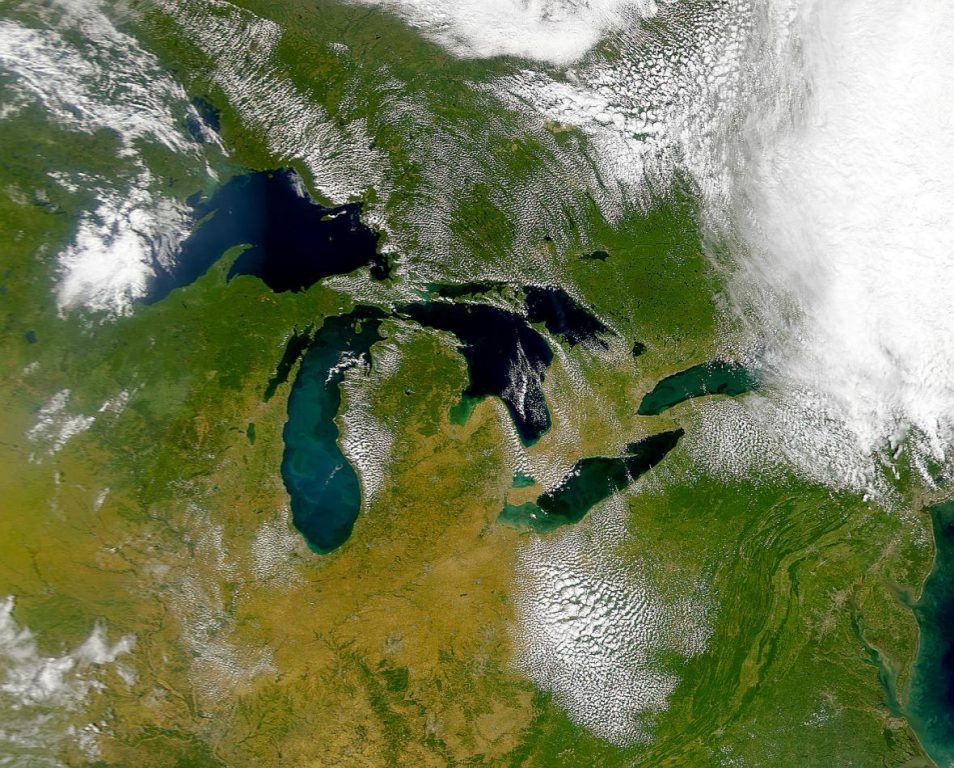Environmental Enforcement Down in Midwest
New report finds declining enforcement, spending and staff in six Great Lakes states.
A review of data from the U.S. Environmental Protection Agency shows a trend of declining environmental enforcement, spending and staff in six Great Lakes states. Those are the findings of a new report released by an environmental advocacy group.
The report by the Chicago-based Environmental Law and Policy Center (ELPC) found fewer environmental enforcement cases had been opened and closed in EPA’s Region 5, which includes Wisconsin, Minnesota, Michigan, Illinois, Indiana and Ohio.
The number of cases opened by the agency had hovered at roughly 300 or more until fiscal year 2016 when cases dropped to an average of 230. The group said the data shows there’s also been a sharp increase in the number of major permitted facilities found in significant noncompliance with the Clean Water Act since fiscal year 2017.
ELPC executive director Howard Learner highlighted President Donald Trump‘s attempts to slash EPA funding and agency decisions that have weakened environmental regulation.
“When it comes to the lack of enforcement, it means that there are lower fines and lower civil penalties. The data show that and it means we have a bad problem that’s simply getting worse,” said Learner.
In its report, the ELPC states civil penalties for Clean Water Act violations have declined from roughly $2 million to less than $500,000 in the last two fiscal years. Penalties paid vary from year to year, but the group argues that fines have been lower in recent years than other recorded declines.
“It’s cut budgets, it’s cuts staffing, which means that there are less people at EPA Region 5 that are able to do tough but fair environmental enforcement,” said Learner.
In more recent years, Congress has appropriated more funding for the agency than levels seen throughout much of the Obama administration. Still, the federal agency has reportedly seen a 15-percent drop in its enforcement staff to 1,842 employees nationwide. In Great Lakes states, the agency has seen an overall 25 percent decline since December 2011 to 940 employees, which the group said likely impacted enforcement staff.
At the same time, Wisconsin has cut the largest portion of funding — 36 percent — from its pollution control programs over the last decade among 31 states, according to a review by the Environmental Integrity Project.
As previously reported by WPR, funding for state pollution control programs was roughly $107 million in the 2008 fiscal year when adjusted for inflation. The level of funding dropped to $69 million in the 2018 fiscal year, according to the report. In Wisconsin, no figures were provided on staffing levels, but around 250 positions were reported to have been lost under former Republican Gov. Scott Walker.
The number of permitted Wisconsin facilities in violation of the Clean Water Act has fluctuated over the years. But, the state has largely seen an upward trend of facilities in non-compliance since fiscal year 2015, according to EPA data.
In fiscal year 2019, there were 534 out of 1,322 permitted facilities — 40 percent that violated clean water regulations, according to an EPA dashboard. The federal agency cautions Wisconsin facilities may appear to be non-compliant for their possible failure to submit required discharge monitoring reports.
An EPA spokesperson said in a statement that the agency couldn’t comment on the ELPC’s findings since they haven’t reviewed the report.
“EPA Region 5 maintains (a) robust compliance assurance and enforcement program,” the agency said. “EPA’s enforcement program is concerned with outcomes, not outputs. We don’t set quotas for enforcement cases.”
The agency added that it’s taken steps to improve environmental protection by working with communities to reduce sewer overflows, and that it’s a priority to reduce rates of significant noncompliance among permitted facilities. The EPA has set a target of cutting its current rate in half by fiscal year 2022.
The agency also said that most recent data shows the national rate for significant noncompliance has gone down and that it’s working with states on data reporting issues.
“These data reporting issues are a key reason for recent increases in reported rates of significant noncompliance in Region 5,” the agency stated. “EPA has been coordinating closely with States to address these issues so that the database more accurately reflects current rates of non-compliance.”
However, Learner argued the agency was downplaying the numbers.
“To pretend that even though the numbers show that staff has been cut, and that enforcement actions are down, and the fines and penalties are down, but noncompliance is up, that those facts and numbers somehow don’t matter, simply doesn’t make sense,” he said.
The group is asking the EPA to improve environmental enforcement by using all available dollars, as well as requesting the Trump administration and Congress increase funding for environmental enforcement staff and resources.
Listen to the WPR report here.
Report: EPA’s Environmental Enforcement Down In Great Lakes States was originally published by Wisconsin Public Radio.
If you think stories like this are important, become a member of Urban Milwaukee and help support real, independent journalism. Plus you get some cool added benefits.






















